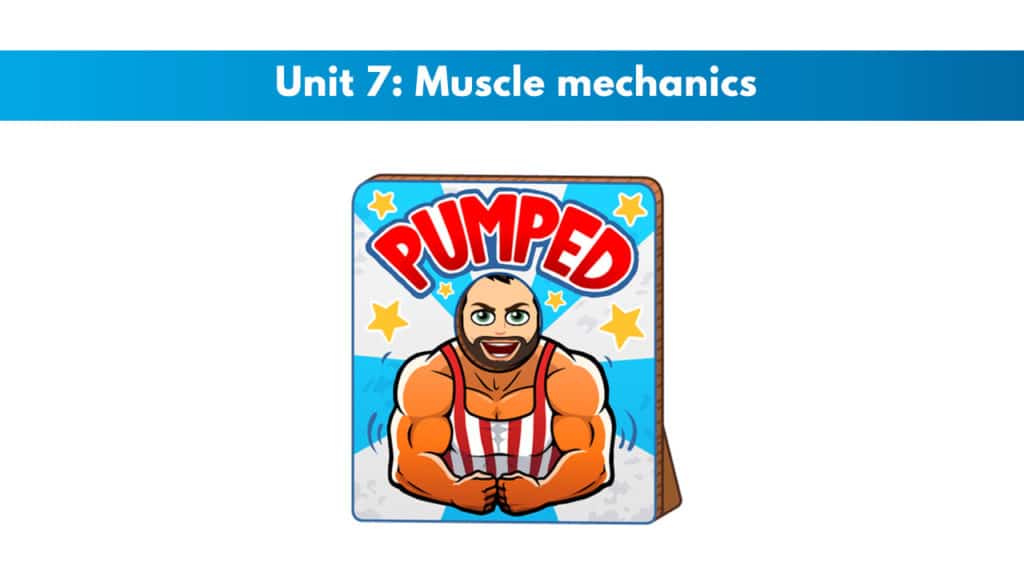
If you have not yet signed up for the ISSA CPT certification, receive a big discount here.
Get your copy of the ISSA CPT exam cheat sheet.
It helps immensely in your ability to study for the ISSA test. This PDF printable one-page sheet gives you a breakdown of the skills and knowledge candidates need to pass the exam.
My PTP students report cutting their ISSA study time and effort in half with Trainer Academy.
Benefit from the Exam Pass Guarantee and Retake Fee Guarantee. Plus, take advantage of my current discount code PTPJULY for 45% off the MVP Program (Ends July 17th, 2025).
Try it out for free here to see if it’s right for you, or read my detailed review for further insights.
1: Which bones make up the knee?
- Femur
- Tibia
- Fibular
- Patella
2: Which muscles are comprised in the knee?
- Semitendinosus
- Biceps Femoris
- Semimembranosus
- Gastrocnemius
- Rectus femoris
- Vastus Itermedius
- Vastus lateralis
- Vastus medialis
- Sartorius
3: What are the knee joints’ main and secondary actions?
- Extension
- Flexion
- Lateral rotation
4: In what way do the quadriceps and hamstrings work collectively in a lunge?
During flexion, the hamstrings are the agonist, the quadriceps are the antagonist, and vice-versa during extension.
5: Which bones comprise the ankle?
- Fibula
- Tibia
- Talus
- Calcaneus
6: Which muscles comprise the ankle?
- Fibularis longus
- Extensor digitorum longus
- Extensor hallucis longus
7: Which actions occur at the ankle joint?
Plantarflexion and dorsiflexion
8: Which muscle performs a role in supporting the foot arch?
Tibialis posterior
9: Describe the function of the spine
Provides a central column for movement and structural integrity and protects the spinal cord, a major component of the CNS
10: Movements of the spine involve:
Anterior flexion, extensions, lateral flexion, and rotation.
11: What purpose do the rectus abdominis, transverse abdominis, and obliques perform in supporting the spine?
These muscles prevent hyperextension and enable spinal flexion.
12: What purpose does the pelvis perform in connection to the “trunk” and lower extremities?
It anchors the large musculoskeletal groups of the trunk and lower body while protecting many vital organs.
13: Describe the connection between the abdominal muscles and hip flexors
Abdominal and hip flexor muscles overlap in stability, with the pelvic girdle acting as the central hub.
Exclusive PTP CPT Offers |
||
|---|---|---|
Most Popular Cert | Best Online NCCA Cert | Best Study Materials |
Gold Standard Cert | A Good Option | Best CPT for you?  |
14: Name the rotator cuff muscles
- Supraspinatus
- Infraspinatus
- Teres Minor
- Subscapularis
15: Which bones comprise the shoulder girdle?
- Clavicle
- Scapula
- Acromion
- Humerus
- Supraspinous fossa
16: Which scapula movement is the shoulder girdle responsible for?
- Abduction
- Flexion
- Extension
- Internal Rotation
- External Rotation
- Scapular Plane Abduction
- Horizontal Adduction
17: What muscles work as the primary movers of the arm at the shoulder joint?
Pectoralis major, coracobrachialis, biceps brachii, anterior fibers of the deltoid, latissimus dorsi and teres major, long head of triceps, posterior fibers of the deltoid.
18: Shoulder impingement may occur from the pinching of which tendon? What exercise should be avoided as a result?
Supraspinatus tendon. Throwing exercises should be done with caution or not at all.
19: In what way do the shoulder girdle and shoulder operate mutually during movement?
The shoulder joint moves the arm while the shoulder girdle moves the scapular for complex multi-plane movement
20: Which muscles are included in the military press?
Most major muscle groups but mainly the deltoids (Medial and Anterior) trapezius, pectoralis major
scapular stabilizers and abdominal group.
21: Which bones make up the elbow?
Humerus, ulna, and radius.
22: The elbow joint is comprised of which anterior and posterior muscles?
Flexor carpi radialis, flexor carpi ulnaris, and the palmaris longus.
23: Which bones comprise the radioulnar joint?
Radius and ulna.
24: Which muscles make up the radioulnar joint?
Brachioradialis and Flexor carpi ulnaris.
25: What actions transpire at the radioulnar joint?
pronation and supination.
26: The wrist joint is made up of which bones?
Carpal, ulna, and radius.
27: Which actions transpire at the wrist joint?
Flexion, extension/hyperextension, adduction, abduction.
28: Which typical injury happens at the elbow joint?
Ulnar Collateral Ligament tear
29: What causes it?
Hyperextension
30: Describe a solution?
Physiotherapy through conditioning of surrounding muscle. surgery in severe cases
31: Which muscles is the wrist comprised of?
The flexor carpi radialis, flexor carpi ulnaris, and the palmaris longus.
If you want assistance wrapping your head around this material, make sure to check out Trainer Academy for some awesome ISSA study materials. They have Practice tests, flashcards, audio study guides, and much more.

 Have a question?
Have a question? 



Tyler Read
PTPioneer Editorial Integrity
All content published on PTPioneer is checked and reviewed extensively by our staff of experienced personal trainers, nutrition coaches, and other Fitness Experts. This is to make sure that the content you are reading is fact-checked for accuracy, contains up-to-date information, and is relevant. We only add trustworthy citations that you can find at the bottom of each article. You can read more about our editorial integrity here.